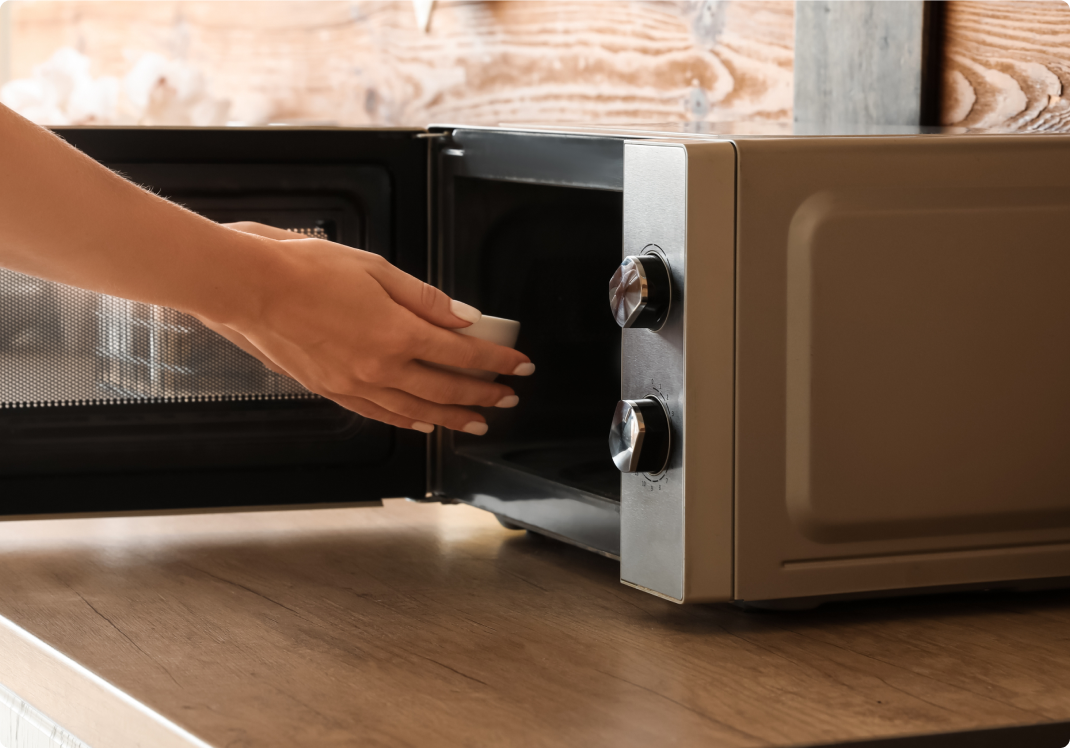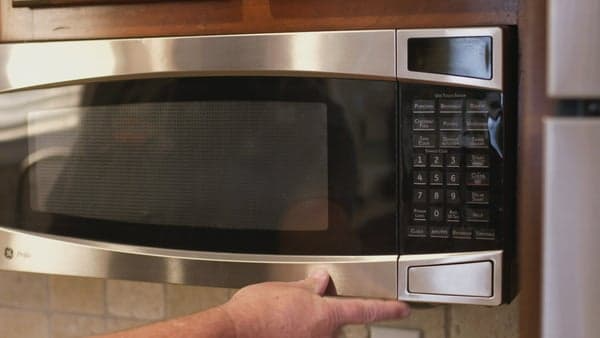When you are constantly on the move, getting things done quickly becomes a top priority—especially when it comes to food. But hold up! Before you reheat last night’s leftover lasagna, you should know your microwave isn’t designed to withstand everything.
Although you may not realize it, your microwave puts in just as much work as you do. Treat it right with some know-how of what not to put in the microwave.
Microwave safety 101: What’s hot and what’s not
An essential part of microwave safety is knowing what not to put in your microwave. Ready for our list of the most common microwave don’ts? Here are a few things you should NEVER put in the microwave:
1. Aluminum Foil
Sparks might fly in romance, but in your microwave? Hard pass. The metal interior of your microwave reflects radio waves. When aluminum foil joins the party, it can be a recipe for fires and a very unhappy appliance.
Instead of casting a reflection of your face, the metal reflects radio waves or microwaves. The radio waves emit electromagnetic energy, warming up your items. When you place metal inside a microwave, the waves are reflected off of the item, causing the aluminum foil to burn rapidly and ignite. So, next time you’re tempted to toss that wrapped leftover into the microwave, think twice and opt for a microwave-safe container instead.
2. Paper Bags
Not all paper bags are created equal. That bag of tasty popcorn slightly differs from the brown paper bag you use to carry your lunch. Popcorn bags are equipped with susceptors, a material made to consume the radio waves produced by microwaves.
Typical paper bags, such as those used in grocery stores, do not have susceptors and can release toxins and fumes when warmed up. Because microwaves produce heat so quickly, the bag could catch fire. So, if you’re wondering what is not microwave-safe, steer clear of ordinary paper bags.
3. Plastic Bags and Plastic Containers
It’s safe to say you’ll want to keep all grocery store bags out of the microwave. When heated,
plastic releases Bisphenol A, or BPA, an organic compound used to make plastic clear, and phthalates, which allows it to be supple.
So, unless you’re interested in adding a side of chemicals to your leftovers, transfer your food to something else. It’s a simple rule of thumb in the world of microwave don’ts: when in doubt, opt for glass.
4. Travel Mugs
Typically constructed of plastic or steel, a travel mug should not make its final destination into your microwave. Because of the metal that’s part of your microwave’s construction, steel cups will inhibit your beverage from being heated and potentially cause friction from the energy being emitted.
For plastic mugs, check the labeling to see if it is “microwave-safe”; otherwise, it’s best to keep your travel mugs on the move. It's worth the extra effort to heat your coffee in a microwave-safe mug and transfer it to your go-to, to-go mug.
5. Your Favorite Shirt
You woke up ready to take on the world today. To commemorate the occasion, you’ve decided to wear your lucky shirt. The shirt is fresh out of the washer and needs to dry, but last night’s load is still taking up space in your dryer. Looking around, you spot your microwave. Microwaves warm things. Warm means dry. You need a dry shirt. All these things make sense. It may seem like your best option, but it’s not.
So the next time you wonder what materials are not microwave-safe, remember that your lucky shirt tops the list. Save your shirt and your microwave. Wait for the dryer; you’ll be glad you did.




